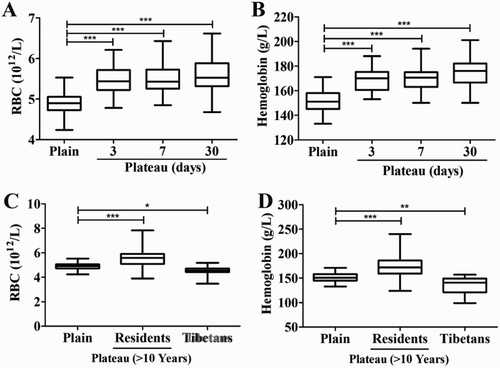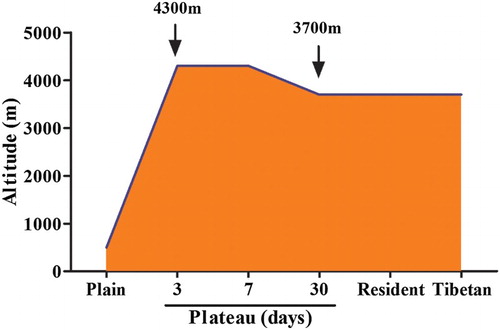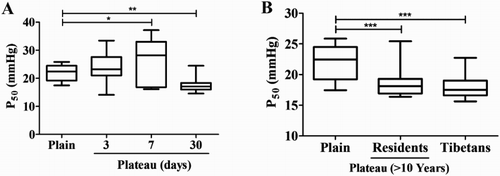Figures & data
Table 1. The baseline characteristics of each group.
Figure 2. RBCs count and HGB concentration in different population. Whole blood was collected from the volunteers before and after entering the plateau, as well as Tibetan and Han population who lived in plateau for at least 10 years. RBCs count (A, C) and HGB concentration (B, D) were detected within 8 hours after blood collection. *P < 0.05, **P < 0.01 or ***P < 0.001 for subjects versus plain group.




